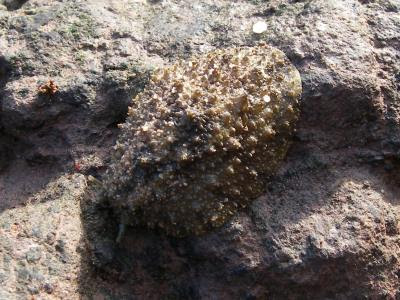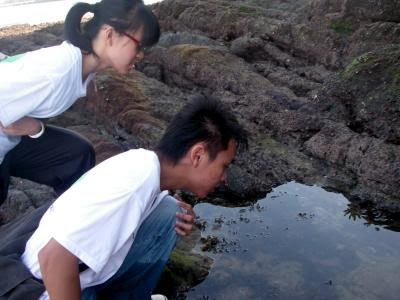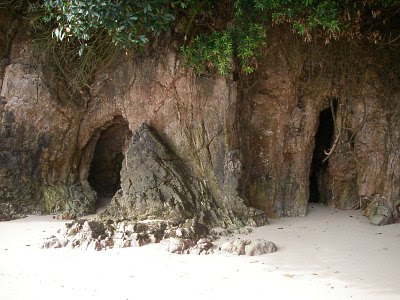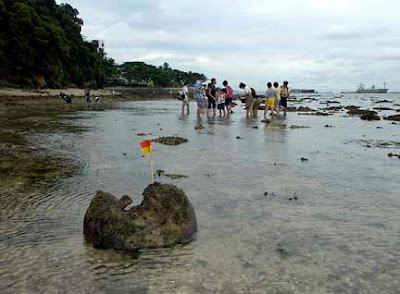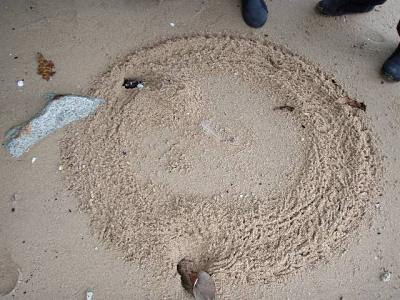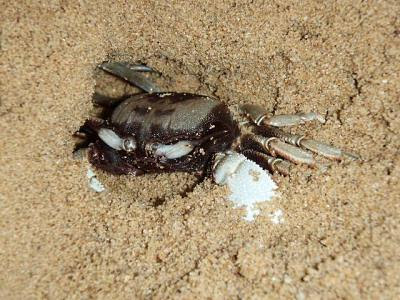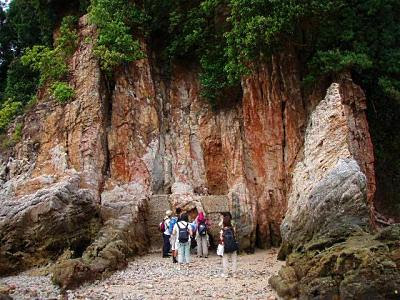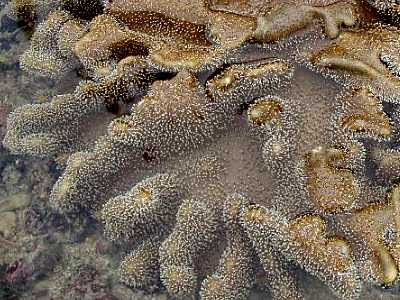Naked Hermit Crabs and friends went on a beach outing at Sentosa today!

But if the beach below is the type of beach you think we headed to...
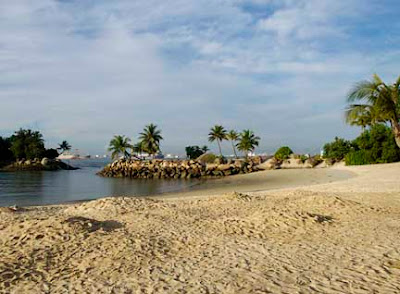
You are wrong! We went to the beach below instead.

And why did we chose to go to an untidy-looking shore instead of a nice artifical beach with imported sand? Read on to find out! :)

It was still not very bright when our advance party reached the beach, and some brownish haze cold be seen hanging over the Singapore mainland. Our advance party were what we called the hunter-seekers, who would help to find interesting things for the rest to see later.
It was tough finding things under the hot sun, so our hunter-seekers did find time to take a short break sometimes, like when a strikingly-coloured kingfisher stopped by and presented great photo opportunities for November :)

Meanwhile, the rest of us were on the Adventure Trail!

And above was Robert explaining to the gang about the sea poison, which was named as such because all parts of the tree contained a poison, and fishermen used to pound the seeds or other parts of the tree to release the poison and used it to stun fish in freshwater streams.

Near the sea poison tree were a few kapok trees, with exploded seed pods. The white and fluffy seed coverings were in mattresses and pillows.

When we got down to the beach, we found several carpet anemones too! Carpet anemones are animals, not plants, though they looked like huge flowers.
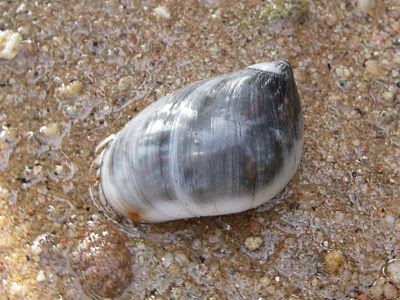
And nearby, a moon snail was sliding just under the sand, probably hunting for little snails or clams.

There were lots of onch slugs at the rocky shores too! They were so well-camouflaged that many of our friends could not spot them until we point it out to them! This is one reason why we should avoid stepping on rocks along the shores, but try as much as possible to step on the more sandy parts instead. You could be stepping on these masters of camouflage!

We saw lots of nerites too, and one of them was on top of another... Are they doing something naugthy? :P

And scrampering all over the rocks were these sea slaters. While they looked like insects, they are not! They are in fact crustaceans, related to crabs and shrimps.

There were many sea lettuce trees along the cliff. Note that this tree shares the common name with a seaweed. While the former is a terrestrial flowering tree, the latter is a marine green algae.

As we walked passed the Tanjong Rimau Beacon, we noticed that it seemed to be breaking apart. Did any boat or ship crash into it? Or was it just wear and tear?

Anyway, it was a really lovely day, and the cliff looked really spectacular against the sky.
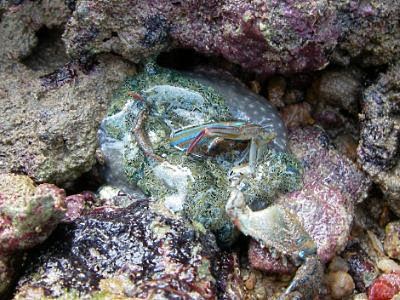
As we reached the Fort Siloso Gun Emplacement area, we found a little branched anemone eating a swimming crab, which got a number of use quite excited. You don't get to see wildlife feeding in action, you know?

And finally, we raeched the lagoon area!
The hunter-seekers have already laid out the route for us, and they have also found lots of interesting things, which I'll just highlight some of them here.

There was a beautiful plate coral, which comprised a colony of tiny animals called coral polyps, and a hard skeleton they built from calcium carbonate, and symbiotic algae which lived in the polyps.

There was a huge colony of dead man's finger, or what we called the finger leathery soft coral. Unlike the plate corals which have hard skeletons, the polyps in soft corals are connected by a soft tissue mass.

The tape seagrasses were also fruiting, but the seeds were somehow bigger and fatter than the ones we saw on
one of our previous trips. If you look closely at seed on the right, there were even shoots coming out of it. In fact, due to the difference in size, shape and the shoots, I didn't realise they are tape seagrass seeds until Ria told me. But why the differences? Was it due to the hotter weather these days, I wonder.

The hunter-seekers also found this pretty nudibranch, which is probably a
Phyllodesmium briareum.

They also found one of the most poisonous crab ever known - the mosaic crab.
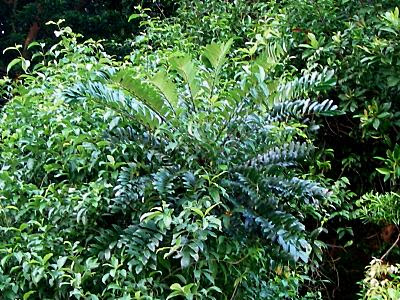
And of course, everyone was excited to see the tonkgat ali, which supposedly, like what Helen said, can make a man more man. Hahahhaha...

Time passes quickly and soon we had to end our walk. The weather was really fine, and we could even see the southern islands! But sadly, instead of little islands of greeneries, we saw lots of chimneys puffing into the air.
For more stories on today's trip, you may want to check out this entry by my fellow hermit crab:
-
Naked Hermit Crabs goes on an adventure on 7 June 2007
-
http://uforest.blogspot.com/2007/06/day-3-with-hermit-crabs-sentosa.html
Thanks to Ria, LK and Siyang for contributing your photos for this blog entry :)
And thanks to all the other NHCs who helped out - Marcus, July, Ivan, Andy, November, Helen, Robert and May!














